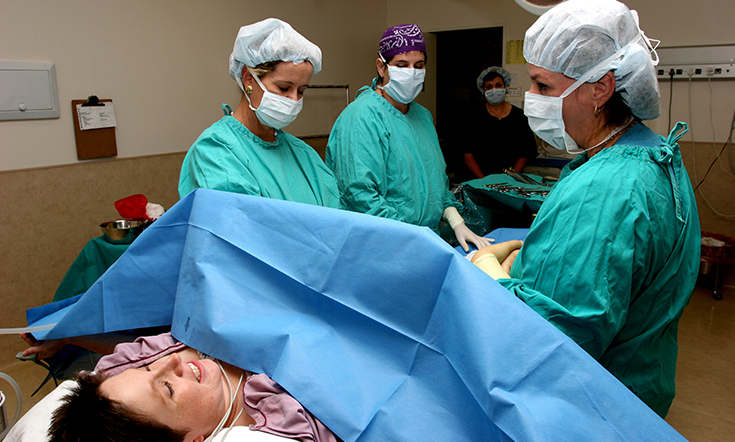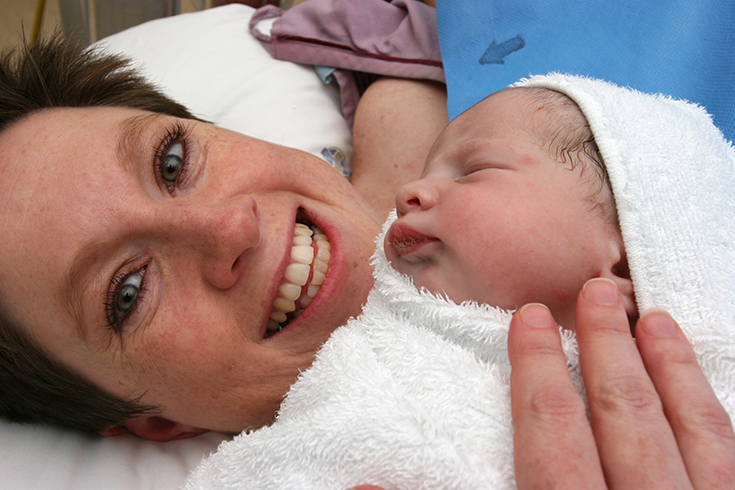

Thanks to technology and the internet, there’s a wealth of information available to mums-to-be regarding birth and labour – but when it comes to caesarean sections, getting the facts can be a little more difficult. And, when you’ve never experienced the procedure before, it can be a daunting prospect. It’s important to know what to expect when having a caesarean so you can fully prepare for your recovery following surgery.
A caesarean section, also known as a caesar or c-section, is an operation to deliver your baby through an abdominal incision.
Caesareans account for about one in every four births in Australia and are either planned in advance as elective surgery or performed as an emergency if a serious complication develops during labour.
Reasons for considering a caesarean include the following:
- Baby appears too large to pass through the birth canal.
- Baby is in a breech position.
- Baby’s health is in question.
- Concern the baby may be too stressed during labour.
- A medical condition such as pre-eclampsia
- Some women choose to have a caesarean due to personal concerns about vaginal delivery.
During surgery
A caesarean may be performed under either general or local anaesthesia (spinal or epidural), however the former is usually reserved for emergencies.
Your obstetrician will make an incision in your abdomen, followed by the uterus.
With local anaesthesia you might feel some tugging or pulling but it won’t be painful. You may also hear some strange sounds such as amniotic fluid being suction out of the uterus or clicks as the surgical instruments are used.
Your baby will be lifted through the incision and you’ll be able to see him or her very soon after delivery. If you can’t hold your baby, your support baby will be able to.
After the placenta is delivered the layers of muscle, fat and skin will be stitched back together and a dressing will be applied over the wound. The entire process usually takes between 20 and 45 minutes.

Following Surgery
Immediately after surgery you’ll be taken to the recovery room for observation while the anaesthetic wears off. You might have cramps and feel nauseated and your legs will feel numb for a few hours.
A nurse will monitor your blood pressure, heart rate and temperature and the firmness of the uterus, vaginal bleeding and the incision will also be checked. The skin around the incision will often be bruised but pain relief will be available if you need it – make sure you tell your midwife or doctor if you do.
You’ll usually be encouraged to walk without assistance about four to eight hours after surgery. You may also receive an injection to prevent blood clots as well as antibiotics to prevent infection.
Your catheter will stay in until the anaesthetic has worn off and you have normal sensation in your legs to walk safely to the toilet. This may not be until the following day.
Bowel movements might be difficult, so drink plenty of water and eat high-fibre food once you’re able to.
Absorbable stitches are used for any incisions made beneath the skin and are often used on your outer abdomen as well. However if non-absorbable stitches are used, they’ll need to be removed around seven days following surgery.
When your dressing is taken off, you’ll need to keep the wound clean and dry – this will help it heal more quickly as well as reduce the risk of infection.
You’ll most likely stay in hospital for up to six days following your caesarean and you’ll be prescribed pain relief to take home with you.
Breastfeeding
- Breastfeeding might be a little more difficult following a caesarean but it’s most definitely encouraged.
- The earlier you start, the easier it is likely to be, for both you and your baby.
- In some hospitals you’ll be encouraged to breastfeed while you’re in recovery if there’s a midwife available to help.
- The most important thing to remember is to ask for as much support as you need during your recovery in hospital and beyond.
Recovering at home
- Full recovery following a caesarean usually takes between four and six weeks, sometimes longer. It’s important to arrange help from family or friends if you can to allow you to get as much rest as possible.
- Avoid lifting anything heavier than your baby, including other children and don’t lift anything that causes you pain. If you think you’re going to need extra support at home, talk with your doctor or midwife prior to leaving the hospital.
- You’ll need to refrain from any vigorous exercise following surgery and the hospital physiotherapists will provide ideas for you to ease back into activity as you recover. However it is advised to keep moving, taking a gentle walk each day is a great way to keep your physical and mental health in check.
- Take regularly pain relievers to prevent pain, but if you’re breastfeeding be sure to ensure your medication is safe for your baby.
- Numbness and itching around the scar is normal and can last for quite a while. Using warmth, such as a wheat bag or hot water bottle, can help.
- When it comes to sex, let comfort be your guide. It can take weeks or even months for some women to feel comfortable having sex so make sure you do what feels right.
- You’ll also need to avoid driving for six weeks post-surgery.
Emotions
For many women, having a caesarean is a positive experience, however some might feel sad or disappointed and it’s important to talk through these feelings.
Looking after a new baby is difficult for all new mums, but it can be even harder when you’re recovering a caesar, which is major surgery.
Take the time you need to recover, seek and accept help and remember to talk to family, friends, doctors or midwives if you are feeling low.
Alternatively, you can call PANDA (Post and Antenatal Depression Association) National Perinatal Depression Helpline on 1300 726 306.






















